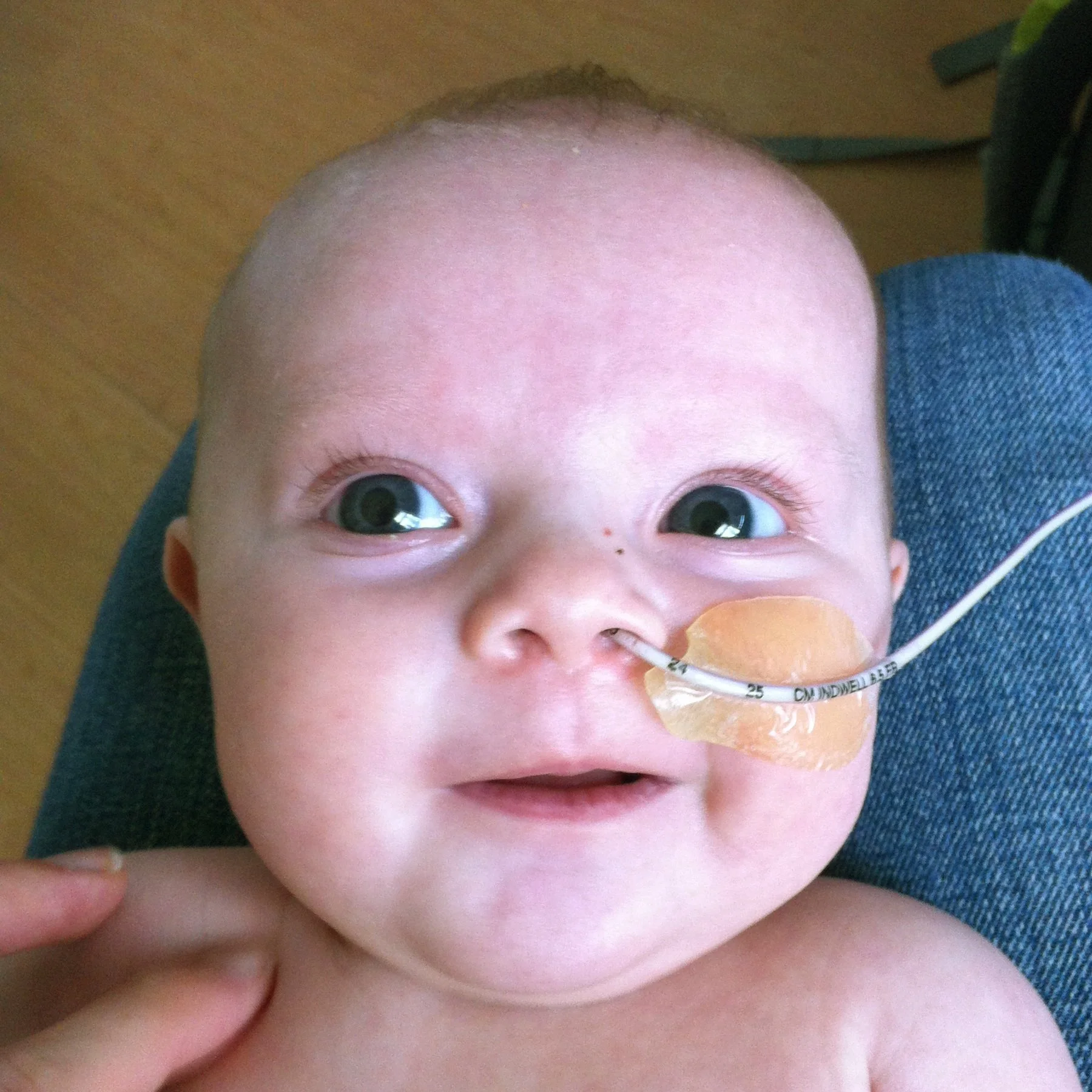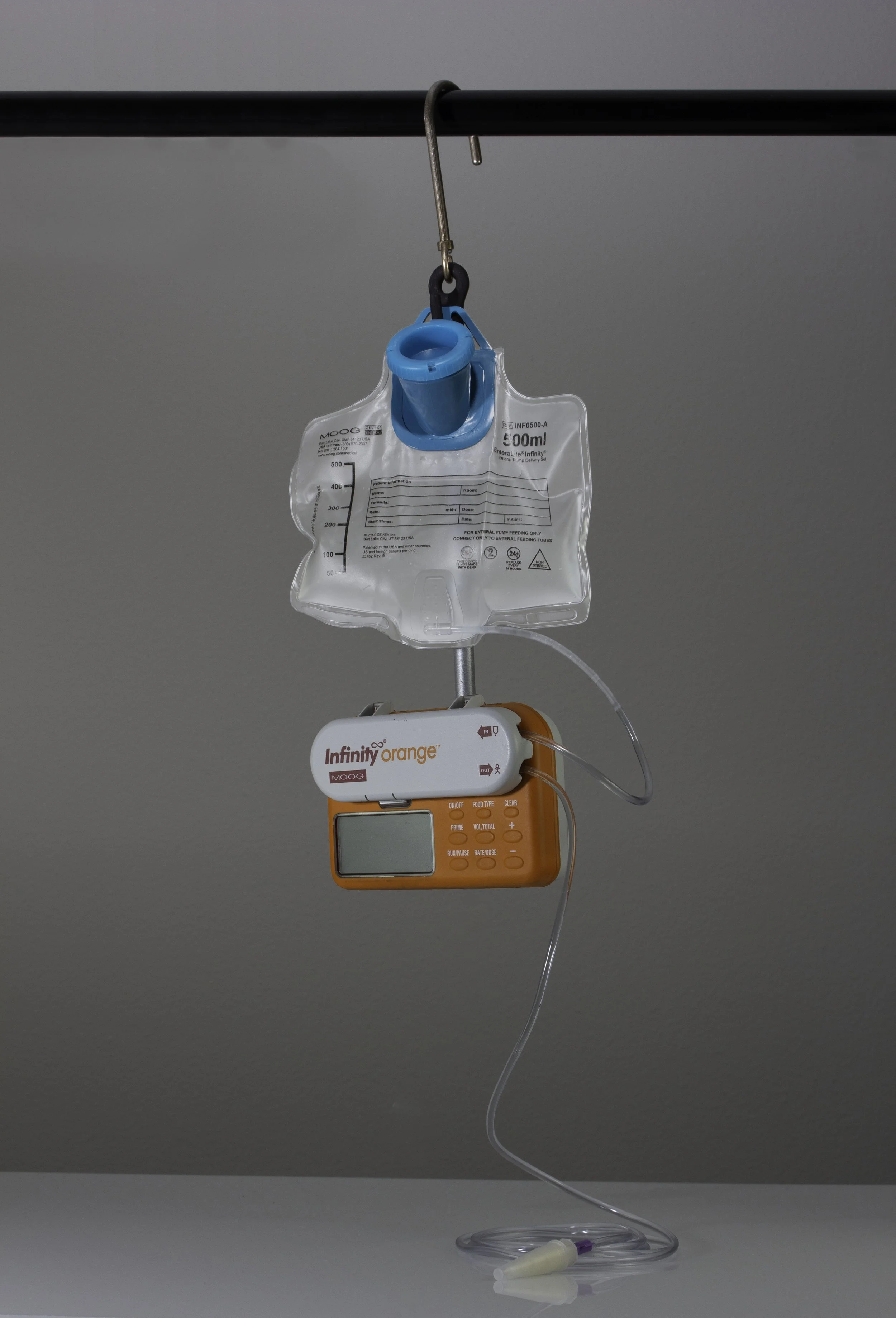Designing a Novel Support System for Feeding Pumps
A case study in user involvement in medical design
Masters Thesis - 2019
Background
Prevalence of Tube Feeding
Feeding tubes are used in home settings by approximately 440,000 individuals in the United States. 53% of users are adults and 46% are pediatric. Feeding tubes are used for a variety of medical conditions such as neurological dysfunction, cancers, failure to thrive, gastrointestinal mobility disorders, and congenital heart defects.
Most Common Feeding Pumps
(based on a survey of 450 home users)
Nasogastric Tube
Short-term use
Gastrostomy Tube
Long-term use
“The home use stuff all feels like an afterthought. It all feels like it’s designed for institutional use.”
Participatory Research and Design Process
I visited the homes of feeding pump users to get their ideas for how the designs of the feeding pump hanging equipment could be improved. I then built functional prototypes based on the users’ suggestions. The users tested the prototypes in their homes for 1 week, and their feedback was incorporated into the final design.
Feeding pumps in daily life
Through my home visits, I found that caregivers must frequently transfer the pump between the IV pole, stroller, car, wheelchair, and feeding backpack, and sometimes use creative solutions to hang the pump.
IV pole a tripping hazard for kids in the bedroom
Difficult to wheel IV pole and standing frame around the house together
Backpack hung from car handle with a coat hanger
Backpack hung from wheelchair because the user was non-ambulatory
A typical day for a young tube-fed child
Prototype designs were based on the participants’ ideas and were tested in their homes
“I wish I could clip the pump to my child’s stroller, wheelchair, and other equipment.”
“I wish I could hang the pump from things in the house, like the bed or a doorknob.”
“I wish the equipment was more portable for both daily life and travel.”
Final Design
The final design is a flexible system which can be used to hang or mount the pump in common daily situations
Accommodates both popular home feeding pump models
Storage spot for tubing cap
Quick-release clamp
Final prototype
The final prototype was made with a combination of aluminum and SLS 3D-printed nylon. I worked with a local fabricator who welded the aluminum frame with TIG welding.























